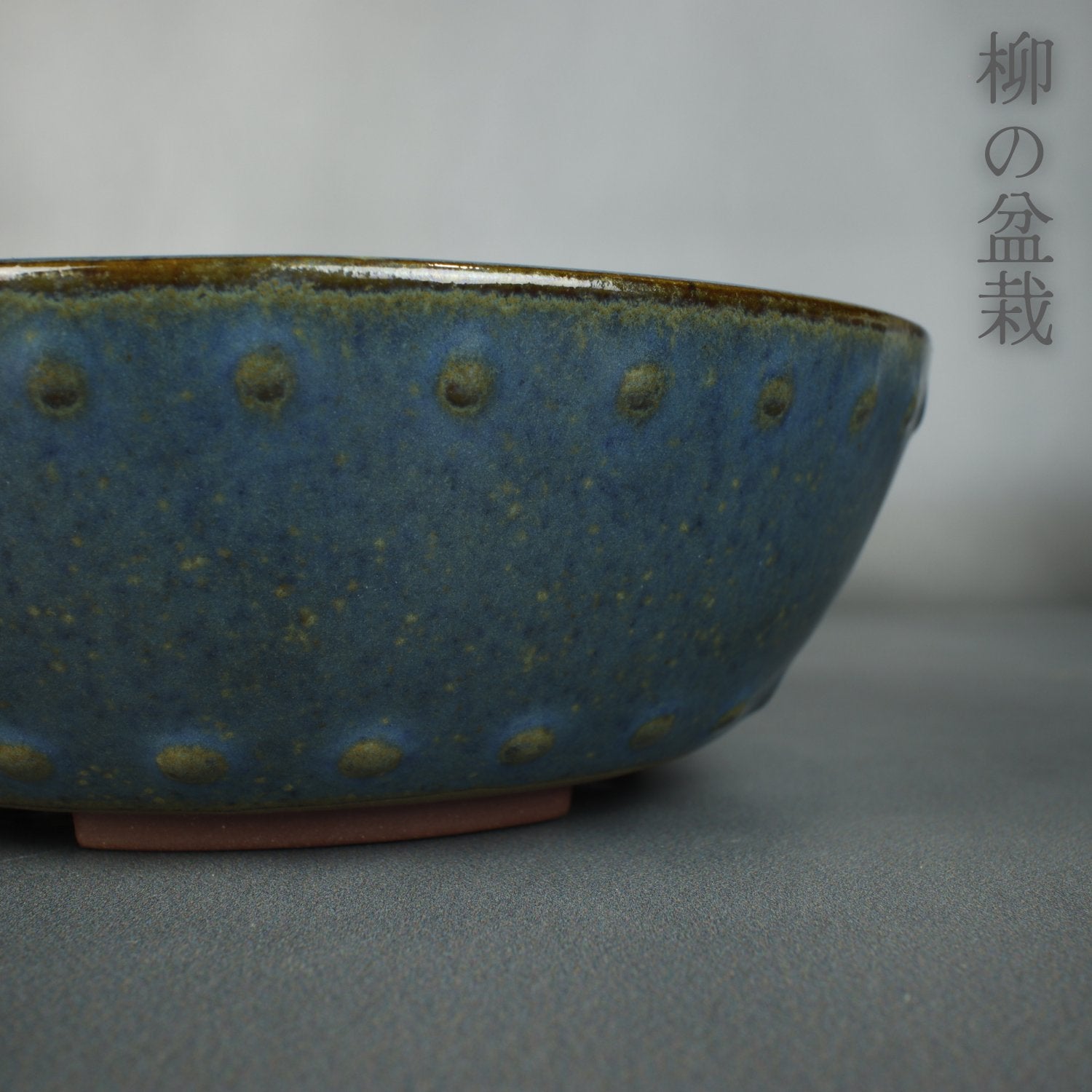What Is Liquid Amber?
Liquid Amber is a common name for the species of deciduous tree scientifically known as Liquidambar styraciflua. It is a member of the family Altingiaceae and is native to the eastern regions of North America. Liquid Amber is a tall, fast-growing tree known for its distinctive star-shaped leaves, which change colors in fall, and its sweet-smelling, resinous sap.
The Liquid Amber tree is a large deciduous tree, growing up to 60-90 feet in height and 40-60 feet in width. Its trunk is typically straight and cylindrical, with a gray or brown bark that is furrowed with age. The branches are strong and well-spaced, forming a rounded, spreading crown.
The tree's most distinctive feature is its star-shaped leaves, which are simple and alternately arranged on the branches. The leaves are 3-6 inches long, with 5-7 lobes that radiate from the center. In the fall, the leaves turn vibrant shades of yellow, orange, and red, adding to the tree's ornamental value.
Liquid Amber is also known for its sweet-smelling, resinous sap, which is produced in the tree's trunk and branches. This sap is sometimes used in the production of fragrance, flavor, and medicinal products. The tree's small, cup-shaped flowers are not showy, but they are attractive to bees and other pollinators. The tree produces clusters of hard, woody fruit capsules that persist into winter.
Liquid Amber is native to the eastern regions of North America, primarily in the southeastern United States. It is found in a variety of habitats, including bottomland forests, wetlands, and along streams and rivers. The tree is well adapted to warm, humid climates and can be found as far north as Massachusetts and as far west as Texas.
Over the centuries, Liquid Amber has been widely cultivated and introduced to other parts of the world, including Europe, Asia, and Australia. In many of these regions, it has become naturalized and is now considered an invasive species in some areas.
Today, Liquid Amber is widely cultivated as an ornamental tree in parks, gardens, and along streets and highways, as well as for its wood, which is used in the furniture and construction industries. It is considered an important ornamental species for its attractive foliage, fast growth, and adaptability to a variety of soils and climates.
Uses of Liquid Amber
Ornamental Plantings
Liquid Amber is widely cultivated as an ornamental tree for its attractive foliage, fast growth, and adaptability to a variety of soils and climates. Its star-shaped leaves, which change colors in the fall, make it a popular choice for parks, gardens, and along streets and highways. The tree's sweet-smelling sap also contributes to its ornamental value.
In addition to its ornamental uses, Liquid Amber is also popular for its shade and windbreak potential, making it a valuable addition to many landscapes. The tree's strong branches and rounded crown make it ideal for use in urban areas, where it can provide shade for homes and buildings and help mitigate the effects of wind and noise pollution.
Overall, Liquid Amber's ornamental value makes it a highly sought-after species for horticulturists and landscape designers, and it continues to be widely planted and enjoyed by people around the world.
Timber
The Liquid Amber tree is also valued for its wood, which is used in the furniture and construction industries. The wood is medium to heavy in weight, with a straight, uniform grain, and a light brown to reddish-brown color. It is durable and stable, making it well suited for a variety of uses, including flooring, cabinetry, and furniture.
In the construction industry, Liquid Amber wood is used for building structures and as a source of wood chips and sawdust for use in particleboard, fiberboard, and other wood products. The tree's strong, straight trunk and branches make it an ideal source of lumber, and its wood is considered one of the best hardwoods for use in the manufacture of veneer.
Despite its many uses, the Liquid Amber tree is relatively uncommon in commercial forestry, due to its slow growth and relatively short lifespan compared to other hardwoods. Nevertheless, it remains an important species for the furniture and construction industries, and continues to be widely cultivated for its wood.
Resin production
The Liquid Amber tree produces a sweet-smelling, resinous sap, which is sometimes used in the production of fragrance, flavor, and medicinal products. The sap is collected by tapping the tree's trunk and branches, a process that is similar to the tapping of maple trees for syrup.
The resin from Liquid Amber is used in the production of a wide range of products, including perfumes, incense, and essential oils. It is valued for its sweet, balsamic fragrance and is used in the manufacture of soaps, candles, and other fragranced products.
In traditional medicine, the resin from Liquid Amber is used to treat a variety of ailments, including coughs, colds, and digestive disorders. It is also used as a mild sedative and is believed to have anti-inflammatory and pain-relieving properties.
While the resin production from Liquid Amber is not a major industry, it remains an important source of fragrance and medicinal products and continues to be used and valued around the world.
Liquid Amber as Bonsai
Liquid Amber is an excellent species for bonsai cultivation, due to its attractive foliage, ornamental bark, and ability to be trained into a variety of styles. When grown as a bonsai, the tree is typically trained to a smaller size, with a carefully pruned and wired crown and a visually interesting trunk.
One of the main challenges in growing Liquid Amber as bonsai is controlling its fast growth, which can make it difficult to maintain the desired size and shape of the tree. Pruning and wiring are essential for keeping the tree in check and for promoting the development of branches and leaves in the desired locations.
Another challenge in growing Liquid Amber as bonsai is controlling the size of the leaves, which can become quite large if the tree is not properly pruned. To address this issue, some bonsai growers clip the tips of the branches, which encourages the development of smaller leaves.
Despite these challenges, Liquid Amber is an excellent species for bonsai enthusiasts, as its attractive foliage and ornamental bark make it an attractive addition to any bonsai collection. With proper care and attention, a Liquid Amber bonsai can be trained into a beautiful and distinctive work of art.
Cultivating and maintaining a Liquid Amber bonsai requires patience, attention to detail, and a commitment to regular pruning and training. Some of the key considerations when growing Liquid Amber as bonsai include:
-
Light and Temperature: Liquid Amber prefers bright, direct sunlight, but can also tolerate partial shade. It is hardy in USDA hardiness zones 5 to 9, which covers much of the United States. The tree is best grown in a warm, humid environment, as it is native to the southeastern United States and is well adapted to warm, humid climates.
-
Soil: Liquid Amber prefers well-draining soil, but it is adaptable to a variety of soils, including heavy clay soils. It is important to keep the soil consistently moist, but not waterlogged, to avoid root rot. The best way to do this is to use proper in organic bonsai soils once the tree reaches refinement. It is ok to grow the tree in organic soils during the development phase.
-
Pruning and Wiring: Regular pruning is essential for maintaining the size and shape of the Liquid Amber bonsai, as well as for controlling the size of the leaves. Wiring is also important for shaping the branches and for promoting the development of new shoots in desired locations.
-
Fertilizing: Liquid Amber benefits from regular fertilizing, particularly during the growing season. A balanced, slow-release fertilizer is recommended, applied every 4 to 6 weeks during the growing season.
-
Pest and Disease Control: Liquid Amber is relatively disease-resistant, but can be susceptible to insect pests, such as scale insects and aphids, which can be controlled with the use of insecticides.
With proper care and attention, Liquid Amber bonsai can be trained into a beautiful and distinctive work of art, showcasing its attractive foliage and ornamental bark. Whether grown indoors or outdoors, Liquid Amber bonsai are a valuable addition to any bonsai collection.
Advantages of Liquid Amber as Bonsai:
-
Attractive foliage: Liquid Amber has bright green leaves that turn a striking orange or yellow in the fall, adding an extra touch of color to the bonsai collection.
-
Ornamental bark: The Liquid Amber tree has a distinctive, smooth, gray bark that becomes increasingly textured and interesting with age, adding to its ornamental appeal.
-
Adaptability: Liquid Amber is a highly adaptable species that can be grown in a variety of soils and climates, making it a good choice for bonsai enthusiasts in many regions.
-
Fast growth: Liquid Amber is a fast-growing species, making it an excellent choice for bonsai enthusiasts who want to see their trees grow quickly and develop into beautiful works of art.
Challenges of Liquid Amber as Bonsai:
-
Rapid growth: Although fast growth can be an advantage, it can also be a challenge, as Liquid Amber can quickly outgrow its bonsai container, making it difficult to maintain the desired size and shape of the tree.
-
Large leaves: The Liquid Amber tree has large leaves that can be difficult to control if the tree is not properly pruned.
-
Pruning and training: Liquid Amber requires regular pruning and training to maintain its size and shape, which can be time-consuming and requires a commitment to detail.
Despite these challenges, Liquid Amber is an excellent choice for bonsai enthusiasts who are willing to invest the time and effort necessary to maintain a healthy and attractive bonsai tree. With proper care and attention, Liquid Amber bonsai can be trained into beautiful works of art that showcase its attractive foliage and ornamental bark.
Conclusion
In conclusion, Liquid Amber (Liquidambar styraciflua) is a versatile and valuable species that has a range of uses, from ornamental planting to timber production and resin production. As a bonsai, Liquid Amber is a highly attractive species, with bright green leaves that turn a striking orange or yellow in the fall, and a distinctive, textured bark that becomes increasingly interesting with age.
Despite the challenges of its fast growth and large leaves, Liquid Amber is an excellent choice for bonsai enthusiasts who are willing to invest the time and effort necessary to maintain a healthy and attractive bonsai tree. With proper care and attention, Liquid Amber bonsai can be trained into beautiful works of art that showcase its attractive foliage and ornamental bark.
In short, Liquid Amber is a valuable and versatile species that is highly prized for its ornamental qualities, both as a tree in its own right and as a bonsai. Whether grown for ornamental purposes, timber production, resin production, or as a bonsai, Liquid Amber is a valuable species that is well worth considering for any gardener or bonsai enthusiast.















1 comment
My late husband would be so pleased to see how beautifull. the large liquid amber tree he planted many years ago has grown and is looking in the sunlight where I am seated.